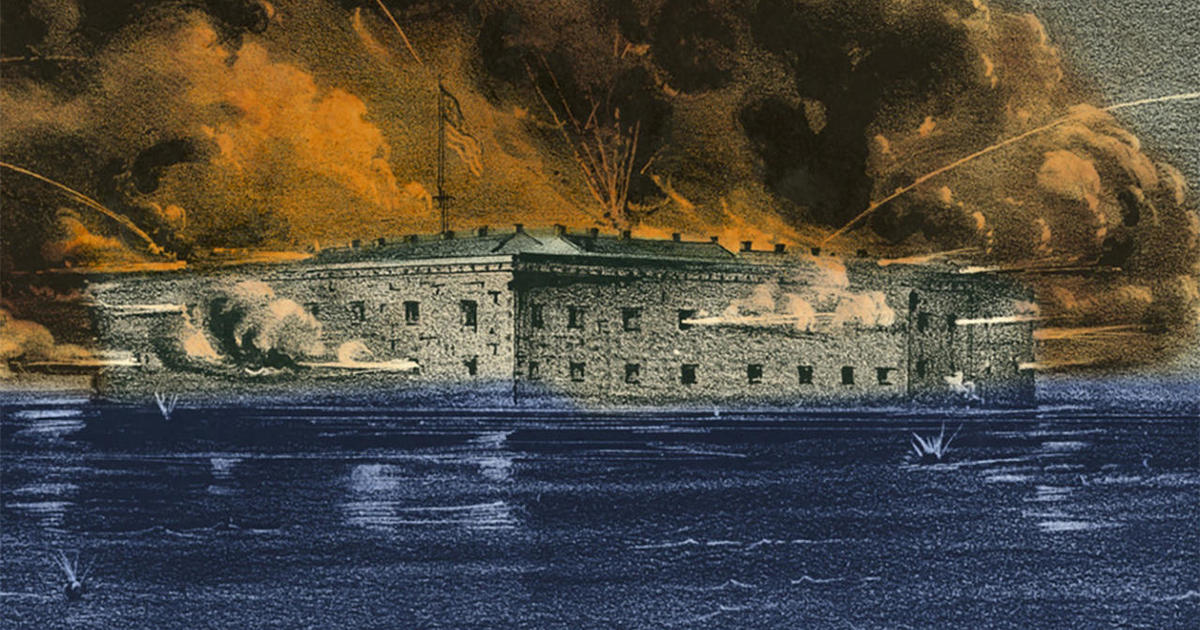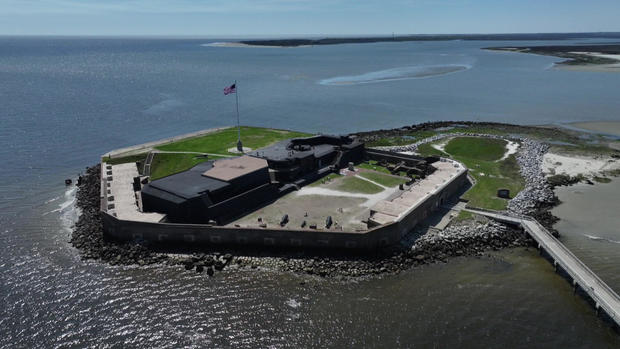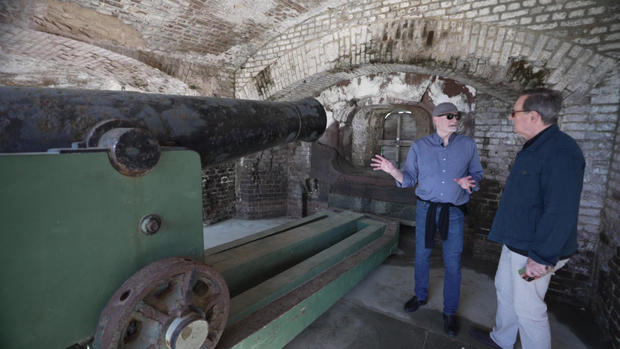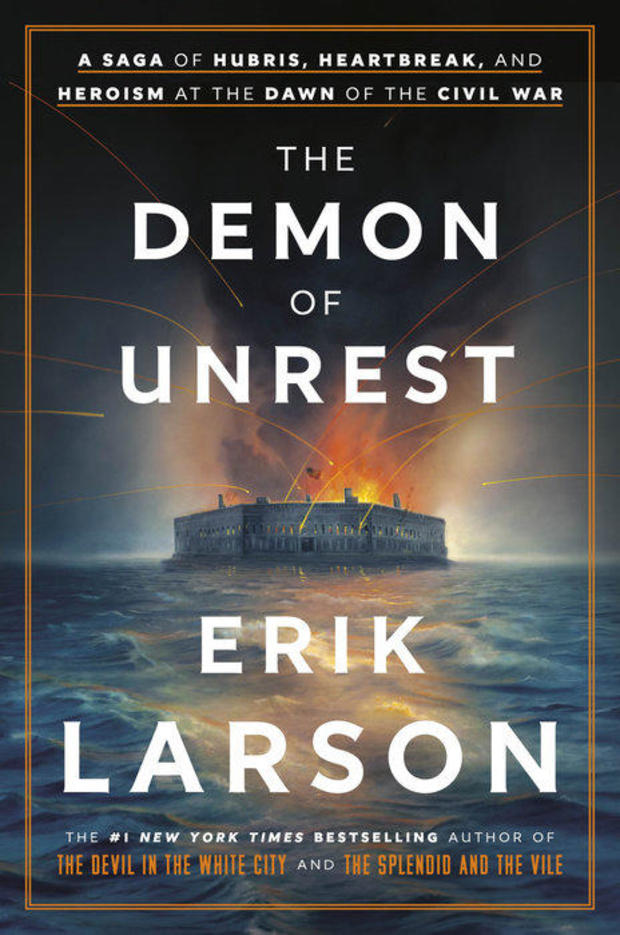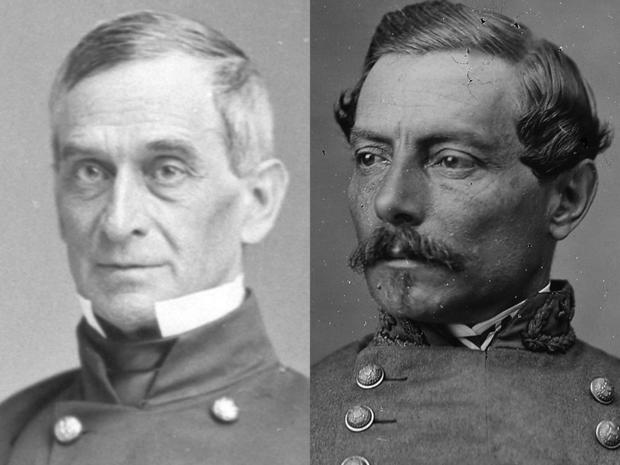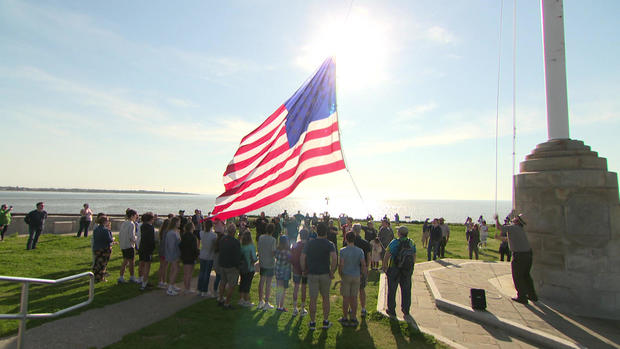The ferry ride to the middle of Charleston Harbor can be a journey back in time. In 1860, Fort Sumter, the federal sea fortress guarding Charleston, became a flash point in the tensions between North and South. “South Carolina saw it as an affront to their sense of honor,” said writer Erik Larson. “It was a symbol of everything they felt they were rebelling against.”
Larson wrote his new book, “The Demon of Unrest,” about the events leading up to the bombardment of Fort Sumter by Confederate forces – the first shots fired in the Civil War. Larson calls it “the single most consequential day in American history,”
CBS News
Now a national park, Sumter has been altered over the years, but history can still come alive here.
With its 50-foot walls, the fort was almost impenetrable. “The idea was, once fully manned with all the gun ports with heavy artillery, that it would be essentially impregnable,” said Larson. “It was designed to defend against seaborne attack from a foreign power. Nobody expected that one day this fort would be the target of fellow Americans.”
CBS News
The author of bestsellers like “The Devil in the White City” and “The Splendid and the Vile,” Larson became fascinated with the buildup to the conflict. The mood in Charleston, he said, was a city “ready for rebellion.”
Crown
Abraham Lincoln had just been elected president of a deeply-divided nation. He’d campaigned to limit slavery, not to abolish it. “The South worked itself up into a condition where they believed that Lincoln represented the apocalypse for Southern culture,” Larson said. “They believed no matter what he said, that he was an abolitionist at heart.”
Charleston, a center of the slave trade, had 32 slave brokerages. Ryan’s Slave Mart was the largest. “It had a showroom where the slaves would get up on a platform and walk back and forth while all the potential buyers were judging them,” Larson said.
Soon after Lincoln’s election, South Carolina became the first state to secede from the Union. The president-elect had to sneak into the nation’s capital in disguise for his inauguration. “The South was so hostile to Lincoln that there were routine death threats,” Larson said.
Mason saio, “In terms of the division in society, it’s eerily similar to where we are now at times.”
“In this period that I’m writing about, the two moments of greatest national dread were the count of the electoral vote and the inauguration – and doesn’t that sound familiar?” Larson said.
By the time Lincoln took the oath of office, six more states had seceded.
Sumter was, to the South, “a standing menace.” The fort, and its 75 men, were commanded by Major Robert Anderson. A Kentuckian by birth, he’d taught artillery tactics at West Point.
Confederate General P.G.T. Beauregard was put in charge of Charleston’s defenses. “Beauregard, actually, had been at West Point, a pupil of Anderson’s. And they were actually friends,” Larson said.
CBS News
He built Confederate batteries all around the harbor. Larson said, “These were so close that on still nights you could actually hear the heavy equipment as the Confederates were establishing their batteries to kill them.’
According to Larson, Anderson was badly outnumbered, by about 25 to 1. But surrendering Sumter, Lincoln wrote, “would be our national destruction consummated.” For three months the tense standoff persisted.
Anderson became very frustrated with the communication from Washington. “He was basically left here to determine, frankly, the fate of America,” Larson said.
At 4:30 a.m. on April 12, 1861, Confederate guns opened fire. Over two days, more than 3,300 shells and balls would rain across the harbor. But they never succeeded in actually breaching the walls. Fire ultimately forced Major Anderson to surrender. Remarkably, no one died in the bombardment.
But 750,000 Americans would be killed before the Civil War ended in 1865.
Four years to the day after Sumter fell, Anderson – by then a retired general – returned to raise the American flag over the fort. “The North greeted him with adulation; he was an absolute hero,” said Larson.
That night in Washington, President Lincoln was assassinated.
Visitors to the fort today are invited to help raise the flag every morning. A park ranger remarked, “Even though this feels like ancient history, the stuff that started here continues to impact and inform our country today.”
A reminder of the fragility of a union … and the price paid to restore it.
CBS News
Read an excerpt: “The Demon of Unrest” by Erik Larson
For more info:
- “The Demon of Unrest: A Saga of Hubris, Heartbreak, and Heroism at the Dawn of the Civil War” by Erik Larson (Crown), in Hardcover, Large Print, eBook and Audio formats, available April 30 via Amazon, Barnes & Noble and Bookshop.org
- eriklarsonbooks.com
- Fort Sumter and Fort Moultrie National Historical Park, Charleston, S.C.
- Fort Sumter Tours
- South Carolina Historical Society
- Drone footage by Sumner Crawford of Above All Media
- The Mills House Hotel, Charleston, S.C.
Story produced by Jon Carras. Editor: George Pozderec.
For more info:
